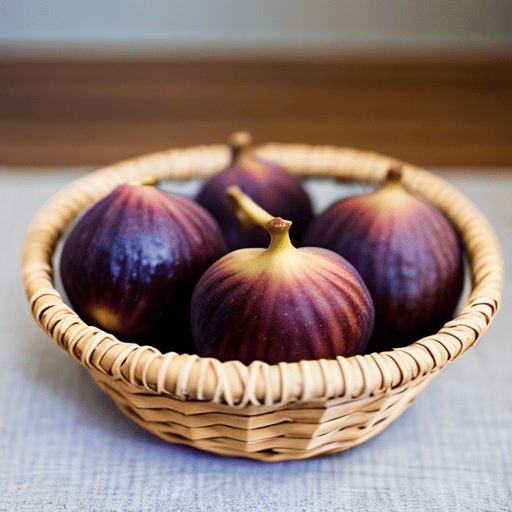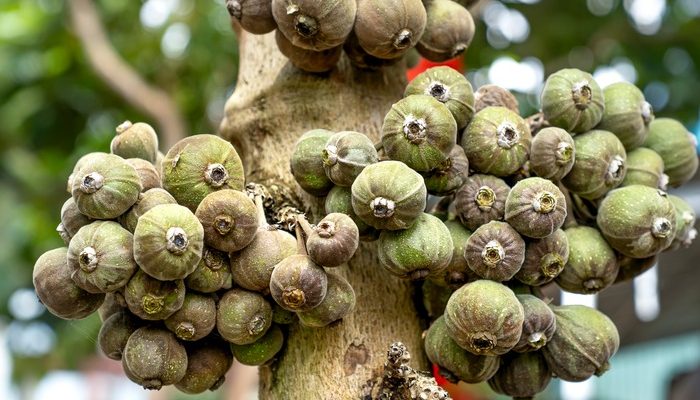Ancient plants with the scientific name Ficus carica,fig trees have been grown for, their mouthwatering figs for thousands of years. They are a popular choice, for many gardens because of their very minimal maintenance requirements and abundant tasty fruit. When do fig trees actually produce fruit,and what variables affect, their productivity? Explore further.

The Fruit Cycle of a Fig Tree,
Fig trees are unique in that they may yield two harvests annually:
The Breba Crop, is the first harvest of the year. Usually appearing in the spring,it develops from the shoot growth of the previous year.
The main crop is often harvested in the late summer or early fall, and grows on the current year’s shoot growth.The fig variety and regional climate play a significant role, on the Breba crop’s presence and quality.
Aspects Affecting Fruit Production
Fig Varieties:
There are various fig kinds, each with a unique pattern of fruiting, Some kinds could be more productive or might give the Breba or the main crop priority.
How old is the tree?
Young fig trees frequently need a while (usually 2–6 years) after planting, before they begin to bear fruit. It’s a time of expansion and establishment.
Climate & Place:
Mediterranean regions with short,moderate winters and long, scorching summers are ideal, for growing figs. Winter in areas with lower temperatures might harm the tree or destroy the early Breba harvest. Better fruiting may result from strategic planting in a protected, sunny area.
Nutrition & Soil:
For fig trees, the best soil is fertile and well-draining, Even though they are fairly resilient, using a balanced, slow-release fertilizer can help them develop and produce more fruit.

Taking Care of a Fruitful Fig Tree
Pruning: For better new growth and increased fruit production,regularly prune your fig tree. Pruning should be done in late winter.
Watering: Although once established, fig trees are drought-tolerant,frequent watering during dry times can encourage good growth and fruit output.
Protection: In colder regions, bring potted trees indoors throughout the winter or cover young fig trees with horticultural fleece. Aphids and other common pests and diseases,such as rust should be watched out for. By taking care of problems quickly, long-term harm can be avoided.
Fruit Collection
It’s essential to select figs when they are fully ripe since they stop ripening, after being harvested. A ripe fig has a delicate texture, is slightly drooping, and could even have tiny cracks.
Expert Table: Fruiting Seasons of Different Fig Varieties
| Fig Variety | Breba Crop Season | Main Crop Season | Notable Characteristics |
| Black Mission | Spring (sparse) | Late Summer to Fall | Dark purple to black skin; sweet, rich flavor. |
| Brown Turkey | Early Summer | Late Summer | Brownish-purple skin; robust flavor; widely adaptable. |
| Celeste | Rarely produces Breba | Mid to Late Summer | Small, blue-purple fruit; sweet, often used for preserves. |
| Kadota | Spring (sparse) | Late Summer | Greenish-yellow skin; less sweet; often used for drying. |
| Calimyrna | Rarely produces Breba | Late Summer | Yellow-green skin; amber flesh; popular for drying. |
| Adriatic | Early Summer | Late Summer to Fall | Green skin; bright red flesh; very sweet and juicy. |
| Panachée (Tiger) | Rarely produces Breba | Late Summer | Striped green and yellow skin; raspberry-like flavor. |
| Desert King | Spring to Early Summer | Rarely produces main | Large, green skin; strawberry-colored flesh; known for Breba productivity. |
| Lattarula (Italian Honey) | Early Summer | Late Summer to Fall | Light green skin; honey-sweet flavor. |
| Osborne Prolific | Early Summer | Late Summer to Fall | Purple-bronze skin; rich and sweet flavor. |
Summary
Note: Depending on the local climate, the health of the trees, and tree care, approaches, different fruiting seasons may occur. Although this chart, gives a basic picture, you should contact regional agricultural extensions or nurseries that specialize in fig trees, for exact fruiting periods in the region you live in.

